1. Image Classification
AI-driven image classification enables rapid categorization of satellite and aerial imagery into meaningful land cover and land use classes. Advanced machine learning models (especially deep convolutional neural networks) can distinguish features like water, urban areas, forests, and agriculture with high speed and consistency. This capability is crucial for large-scale environmental monitoring and urban planning, as it automates what was once a labor-intensive manual mapping process. The neutral, data-driven approach of these models helps reduce human bias in interpreting images. Overall, AI image classification provides a foundation for timely insights in geospatial analysis, supporting decision-making in climate science, resource management, and development planning.
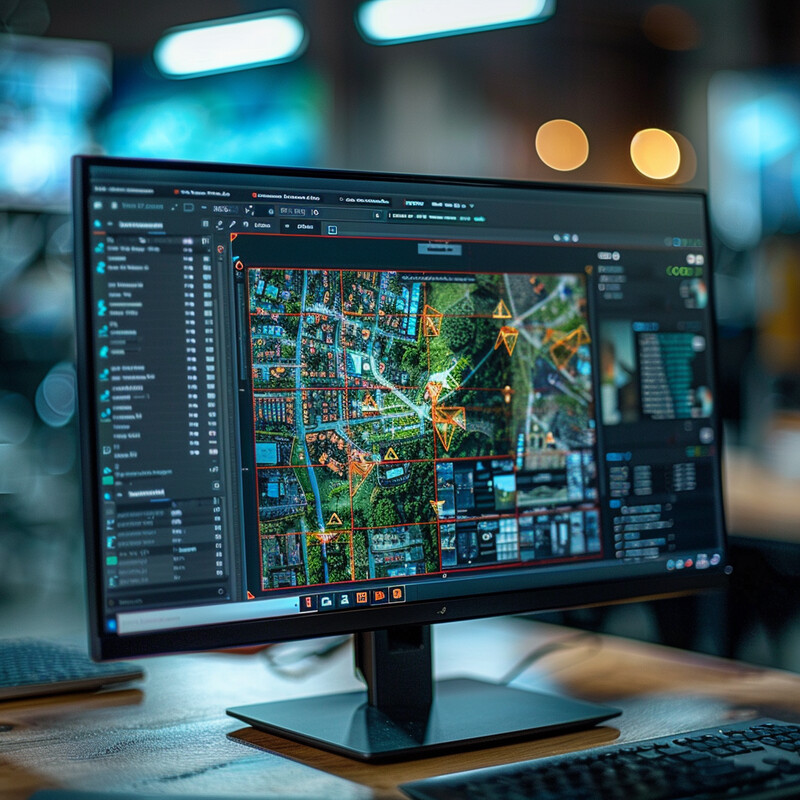
Recent evaluations of AI-based global land cover maps demonstrate the improving accuracy of image classification at scale. A 2024 peer-reviewed study compared several 10-meter resolution global land cover datasets generated by AI and found overall classification accuracies ranging from about 73% to 84%. Notably, the ESA WorldCover map achieved the highest accuracy (~83.8% correct), slightly outperforming the AI-driven Dynamic World (Google/WRI) and Esri LULC maps. These figures highlight that modern AI classifiers can reliably categorize most land surface types across the globe, though challenges remain in heterogeneous landscapes and certain regions.
2. Object Detection
In geospatial contexts, AI-based object detection systems automatically identify and locate specific features (e.g. vehicles, buildings, roads) within high-resolution imagery. By leveraging patterns learned from large datasets, these algorithms can scan aerial or satellite images and pinpoint objects of interest far faster than manual annotation. This capability aids urban planning, transportation management, and infrastructure monitoring by providing up-to-date inventories of assets like structures or cars. The approach is technical and neutral – objects are detected based on visual signatures, improving consistency in analyses. Overall, AI object detection enhances the efficiency and scale of spatial data analysis, enabling applications from traffic flow optimization to mapping settlements in remote areas.
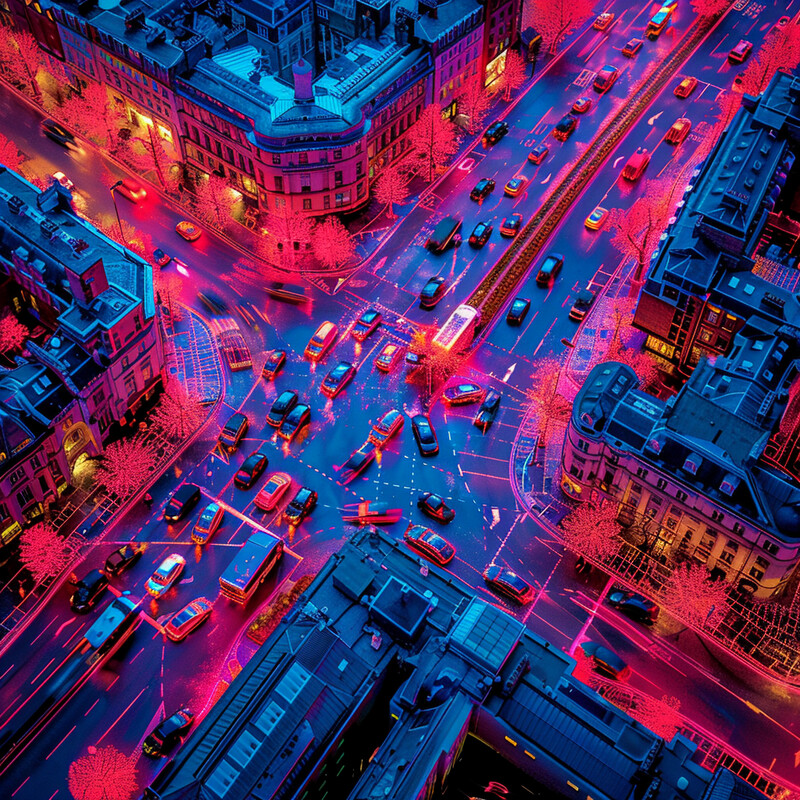
The scale and diversity of object detection in geospatial imagery have expanded with recent AI developments. In early 2025, researchers introduced the VME (Vehicles in the Middle East) dataset containing over 100,000 annotated vehicles across 4,000 high-resolution satellite images from 54 cities in 12 Middle Eastern countries. By training models on this diverse dataset, they significantly improved vehicle detection accuracy in regions previously underrepresented in training data. This work, co-led by Qatar’s computing research institute, highlights how AI can robustly detect objects like cars in satellite imagery worldwide, provided the training data cover different geographies and conditions.
3. Change Detection
AI-powered change detection involves analyzing sequences of geospatial images over time to automatically identify what has changed in a landscape. By using techniques like image differencing and time-series analysis with machine learning, AI can flag alterations such as urban expansion, deforestation, crop rotation, or disaster damage. This automated monitoring is faster and more consistent than human visual comparison, enabling near-real-time tracking of environmental and man-made changes. It provides a technical, fact-based way to detect trends (like shrinking water bodies or new construction) critical for policy response. In practice, AI change detection supports disaster management, conservation, and urban planning by delivering timely alerts about significant spatial changes.
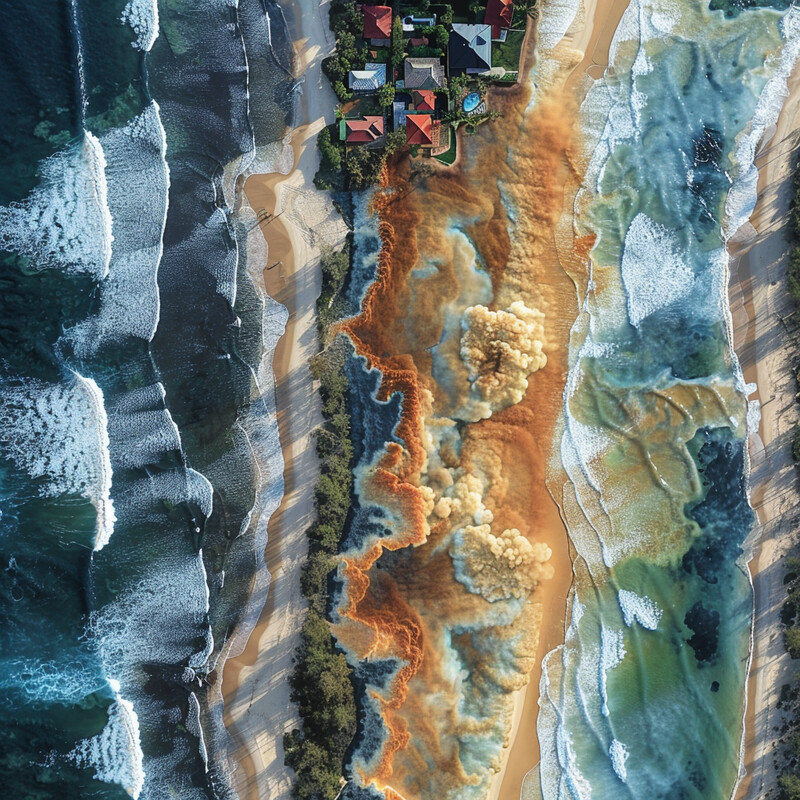
AI has proven especially valuable in detecting rapid environmental changes such as wildfires. In 2025, a Brazilian research team developed a convolutional neural network model to automatically identify wildfire-affected areas in satellite images of the Amazon rainforest with about 93% accuracy. Published in the International Journal of Remote Sensing, their study showed that combining satellite data (Landsat imagery) with deep learning greatly speeds up wildfire detection, providing reliable results in under a day. This high success rate in change detection for fires means authorities could receive earlier warnings of burning forests, potentially improving response times and mitigating damage.
4. Predictive Modeling
In geospatial analysis, AI-based predictive modeling uses historical spatial data and patterns to forecast future events or conditions. Machine learning models can be trained on past observations of phenomena like floods, wildfire spreads, or urban growth and then predict where or when such events are likely to occur next. This approach moves beyond static maps, offering scenario projections under various assumptions (e.g. climate or land-use changes). The language of these models is technical and data-driven: they output risk maps or probability estimates that help planners prepare for what might happen. Ultimately, AI predictive modeling serves as a decision support tool, allowing governments and organizations to anticipate problems (like identifying future flood-prone zones) and plan mitigations with greater confidence.
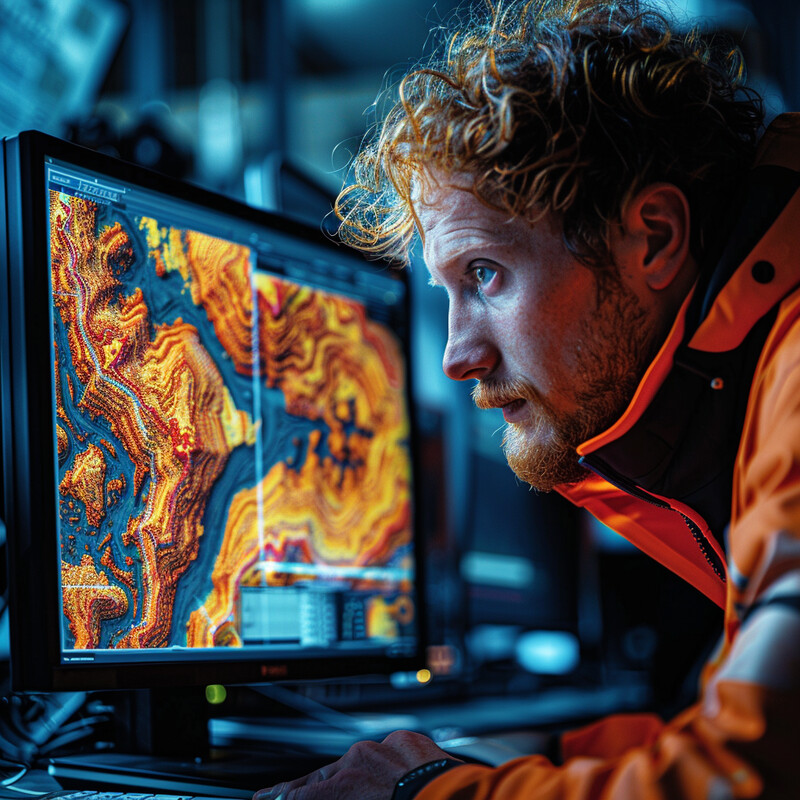
A notable example is Google’s AI-driven flood forecasting system, which in 2024 achieved substantial improvements in both lead time and geographic coverage. Google researchers reported a new model capable of predicting river floods up to 7 days in advance with accuracy comparable to state-of-the-art “nowcast” systems (which typically provide only 0–1 day lead time). This AI model, deployed via Google’s Flood Hub, expanded flood alerts to over 100 countries and effectively extended the warning lead time by two days compared to the previous version. By the end of 2024, such predictive modeling was providing communities worldwide with earlier and more reliable flood warnings, illustrating AI’s value in forward-looking geospatial analysis.
5. Automation of Map Production
AI is streamlining the creation and updating of maps by automating many traditionally manual cartographic tasks. Through techniques like computer vision and natural language processing, AI can extract features (roads, buildings, land use, etc.) from raw data sources and assemble them into map layers with minimal human intervention. This automation accelerates map production cycles – what once took weeks of digitization can sometimes be done in minutes by an algorithm. Moreover, AI-driven mapping reduces human error and ensures consistent application of mapping criteria across regions. In technical terms, these systems ingest sensor data (imagery, LiDAR, GPS logs) and output structured geospatial datasets. The result is faster, more up-to-date maps for navigation, urban planning, and disaster response.

The scale of AI’s contribution to map-making is exemplified by Microsoft’s recent release of a global building footprint dataset. In mid-2023, Microsoft’s “Maps AI” team announced it had automatically extracted 1.2 billion building footprints, along with estimated heights for 174 million buildings, from satellite imagery spanning 2014–2023. This worldwide dataset (available via Bing Maps and the OpenStreetMap community) was generated using deep learning computer vision techniques and covers structures across many countries. The AI-based automation not only vastly increased the speed of map production but also provided uniform data for previously unmapped or poorly mapped regions, highlighting how AI can handle mapping tasks at a continental or global scale.
6. Enhanced Accuracy of GIS Data
AI techniques are improving the precision and quality of GIS (Geographic Information System) data by detecting and correcting errors in spatial datasets. Geospatial data often contain inaccuracies due to sensor noise, human error, or outdated information – for example, misaligned map features or missing attributes. Machine learning models can learn to flag anomalies or refine measurements by cross-analyzing multiple data sources (satellite images, GPS readings, LiDAR scans, etc.). In a neutral, technical manner, AI algorithms calibrate data points, remove outliers, and even predict more accurate values to fill gaps. The outcome is a cleaner, more reliable GIS database where locations and features align better with reality. This higher accuracy is vital for applications like navigation, surveying, and any analysis that depends on trustworthy geospatial information.

National mapping agencies have begun using AI to boost the accuracy of their official maps. In Finland, for instance, the National Land Survey implemented an AI project in 2023 to improve its topographic database by automatically detecting building footprints from aerial imagery and LiDAR data. The AI model (a deep learning segmentation network) achieved up to 97% object-level accuracy in identifying buildings when tested against reference data. These “AI-derived” building outlines were then used to correct errors in the existing map – catching mislocated structures, adding buildings that were missed, and flagging ones that no longer exist. This case demonstrates how AI can greatly refine GIS data: the Finnish project expanded the map’s coverage of buildings and improved positional accuracy, ensuring the digital map kept pace with real-world changes.
7. Optimization of Routes
AI is transforming route optimization by analyzing vast amounts of geospatial data (like road networks, traffic conditions, and delivery locations) to find the most efficient travel paths. Unlike traditional routing algorithms that follow static rules, AI-based systems can learn from historical traffic patterns and real-time sensor inputs to dynamically adjust routes. In logistics and transportation, this means vehicles spend less time and fuel reaching their destinations, even as conditions change. The process is highly technical: models solve complex vehicle routing problems, sometimes with reinforcement learning or advanced heuristics, to minimize distance or travel time. In neutral terms, AI route optimization provides evidence-based recommendations – often delivered through navigation apps or fleet management software – that improve upon human or manual planning. The net effect is faster deliveries, reduced congestion, and lower transportation costs.
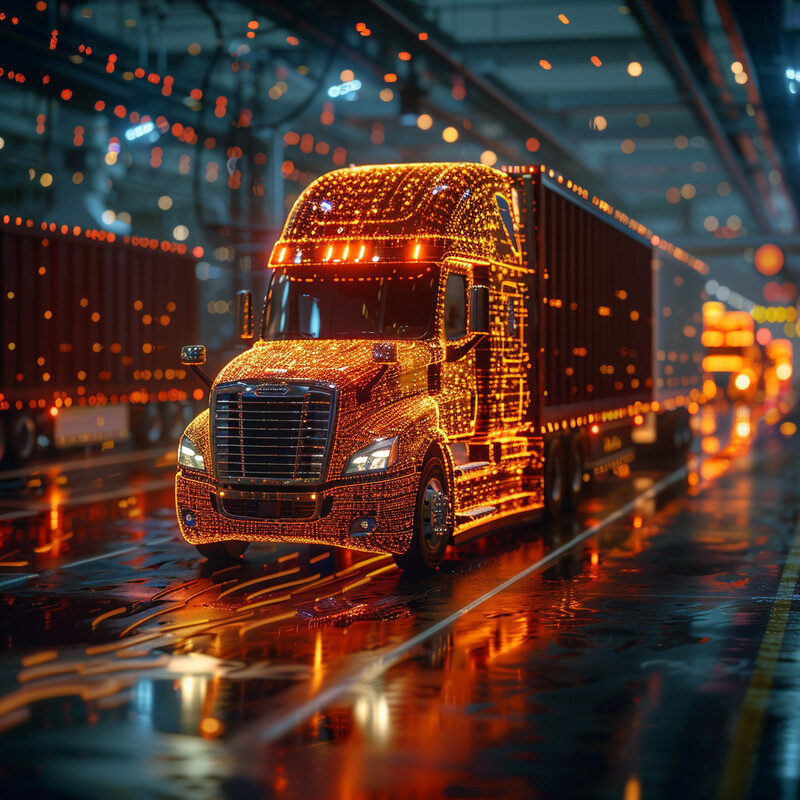
Large-scale deployments of AI route optimization have yielded significant efficiency gains. A prominent example is UPS’s AI-assisted routing platform, ORION. When UPS rolled out ORION across its fleet, it reportedly saved the company around $320 million, and analysis showed it cut fuel consumption by about 10 million gallons by streamlining delivery routes. This system, which uses advanced algorithms to optimize each driver’s daily route, initially covered 35,000 drivers and reduced mileage substantially. The results, reported by UPS and highlighted in industry publications, illustrate how AI-driven route planning not only slashes operational costs but also has major environmental benefits by lowering fuel use and emissions. These real-world savings underscore the value of AI in optimizing routes for businesses at scale.
8. Disaster Response and Management
AI augments disaster response by rapidly processing geospatial data to assess damage and identify critical needs in the aftermath of events like earthquakes, hurricanes, or floods. Using satellite and aerial imagery, AI models can quickly detect damaged buildings, blocked roads, or affected populations, providing emergency managers with maps and statistics hours (or days) faster than traditional methods. This fact-based approach improves situational awareness: responders get an unbiased overview of where destruction is worst and where to allocate resources first. Technically, the AI systems employ change detection, object recognition, and even predictive analytics (for secondary risks) in a crisis setting. By integrating with GIS and emergency databases, these AI tools help coordinate relief efforts more effectively, from guiding search-and-rescue teams to planning relief supply routes, all with the goal of saving lives and infrastructure when time is critical.
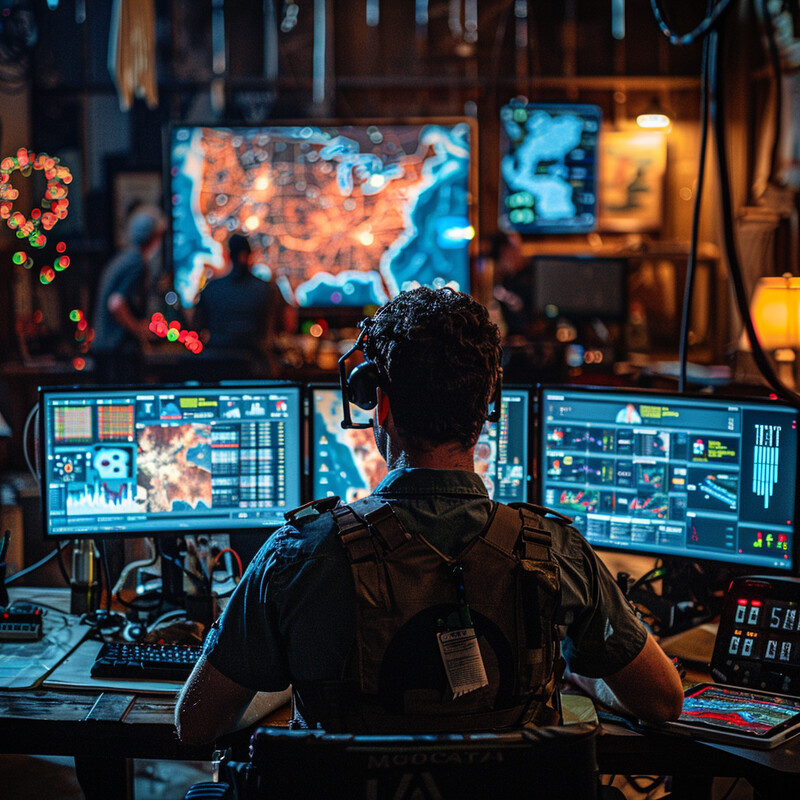
A collaboration between the United Nations and Google demonstrated how AI can dramatically speed up damage assessments. In tests on nine recent natural disasters, an AI-assisted analysis system enabled UN satellite analysts to cover 7 times more area and produce initial damage reports 6 times faster than purely manual methods. Specifically, the AI tool brought the turnaround for “directional” building damage assessments down to under one day, whereas traditional analysis often took several days for large disaster zones. This improvement, documented in 2023 by UN Global Pulse experts, means responders can get high-quality overviews of disaster impacts much sooner. As a result, emergency managers can prioritize aid and interventions more quickly during unfolding crises, exemplifying AI’s life-saving potential in disaster management.
9. Integration with IoT for Real-Time Data Collection
The integration of AI with Internet of Things (IoT) networks has given rise to smart geospatial systems that analyze streaming data in real time. In smart cities, countless IoT sensors (traffic cameras, air quality monitors, weather stations, etc.) continuously collect location-tagged data. AI algorithms ingest this flood of information to detect patterns or anomalies on the fly – for example, adjusting traffic light timing based on live traffic flows or identifying a pollution spike in a specific neighborhood. This synergy enables dynamic spatial analysis: maps and models that update in real time rather than static snapshots. Technically, it involves edge or cloud computing where AI models run on incoming sensor data. The result is a more responsive management of urban infrastructure and environments, as decisions (like rerouting traffic, dispatching maintenance crews, or issuing public alerts) can be made promptly and objectively based on the data-driven insights from these AI+IoT systems.
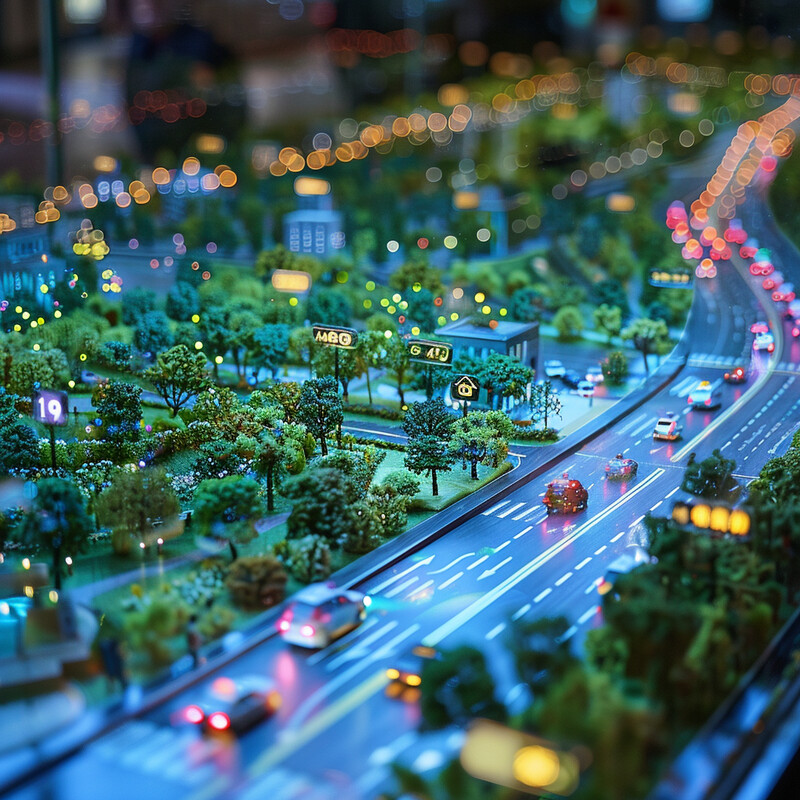
The scale of real-time geospatial data from IoT devices is enormous and growing, underscoring why AI is essential to make sense of it. By the end of 2024, an estimated 18.8 billion IoT devices will be connected globally, a 13% increase from the previous year. Many of these devices – from smart streetlights to environmental sensors – stream location-based data that cities and companies use for operational decision-making. For example, modern smart traffic management systems deploy AI to analyze inputs from networked traffic cameras and vehicle sensors, optimizing signal timings to reduce congestion and travel times in real time. Without AI, the sheer volume and velocity of IoT data would be overwhelming to manage. With AI, however, city administrators can continuously monitor conditions (traffic, air quality, energy usage, etc.) and respond immediately to changes, thereby improving efficiency and livability.
10. Cultural Heritage Management
AI is playing a growing role in protecting and managing cultural heritage sites by analyzing geospatial and image data for signs of risk or deterioration. High-resolution photographs, satellite images, and 3D scans of monuments and archaeological sites can be processed with machine learning to detect subtle changes, such as cracks in structures, weathering of surfaces, or encroaching vegetation. This offers a neutral, systematic way to monitor heritage sites continuously, rather than relying only on periodic human inspections. Additionally, AI can help prioritize conservation efforts by predicting which parts of a site are most vulnerable to decay or natural hazards. In essence, these tools act as an “early warning system” for cultural heritage, ensuring that preserving our history is guided by up-to-date data and analysis. They complement the work of historians and conservationists with technical precision and scale, covering many sites simultaneously.
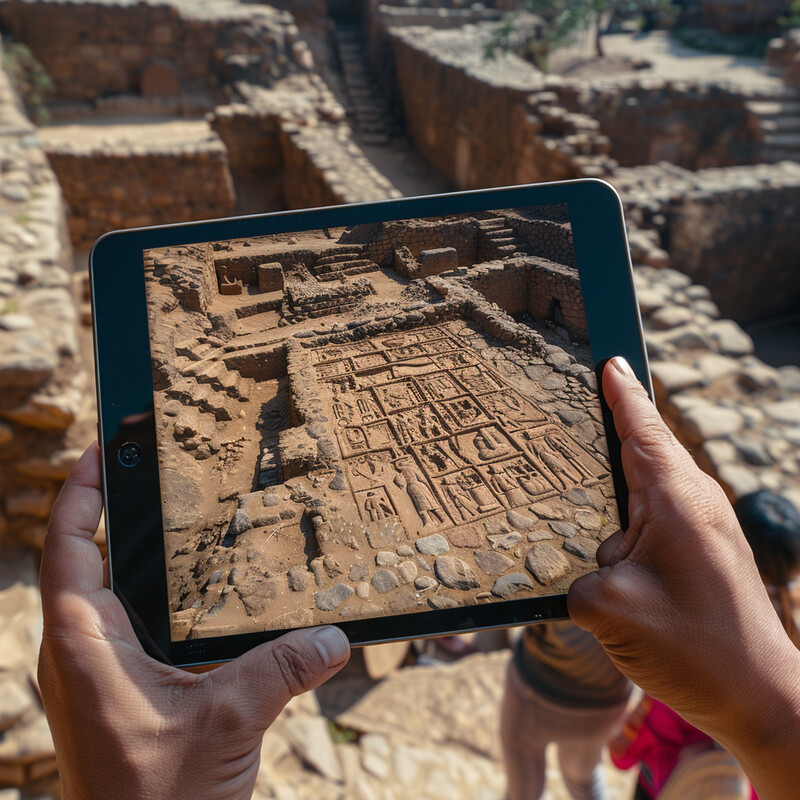
Researchers have successfully applied AI to inspect historical structures for damage that might not be easily visible to the naked eye. In one 2023 study, a deep learning model was trained to identify structural cracks in historic masonry monuments (like the centuries-old Khaju Bridge in Iran), and it could accurately detect both major and minor cracks from imagery. The AI system proved adept at localizing even hairline fractures and signs of material stress on these cultural heritage sites, helping experts assess deterioration risks early. By automating crack detection and similar analyses, AI tools allow heritage conservators to keep a much closer watch on the condition of important monuments. Such implementations have been praised for providing “rapid, accurate damage assessment” of heritage structures, enhancing our ability to maintain them for future.